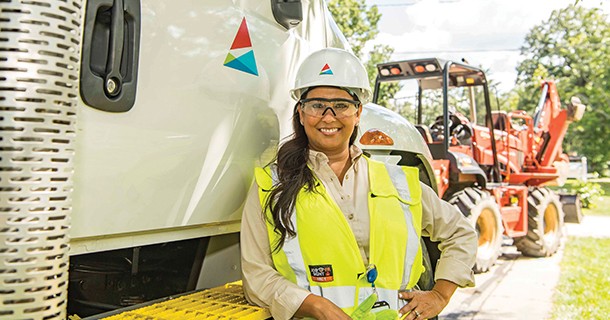Natural Gas Forklifts
Natural gas forklifts are an especially good choice for companies concerned about air quality in their warehouses:
- Costs
Fuel costs for a natural gas forklift typically are less than for electric-powered lifts, which also require greater downtime for refueling. Natural gas lifts need less maintenance than electric ones.
- Safety
Natural gas forklift operation can help to make your facility a safer workplace. In the event of a leak, natural gas dissipates harmlessly into the air as water vapor and carbon dioxide, unlike other fuels that are flammable.
- Indoor Air Quality
Natural gas forklifts produce much less carbon monoxide than those powered by gasoline or diesel, meaning better indoor air quality. Natural gas also produces lower emissions of other hazardous materials, such as nitrous oxides, and can help companies meet OSHA requirements for indoor air quality standards. In addition, natural gas does not produce the noxious odor sometimes associated with gasoline and diesel vehicles.
- Refueling
Natural gas refueling is safer, more convenient and less of an environmental liability for your company. Natural gas is dispensed through a sealed system with no leakage. Operators easily can be trained to dispense natural gas, and protective clothing is not required. There is no need to change out tanks; therefore, it reduces the risk of back injuries. Natural gas forklifts also can be refueled safely indoors, unlike propane, diesel and gasoline vehicles.
- Reduced Maintenance
Natural gas burns cleaner than gasoline or diesel, which means less wear and tear on engine parts, according to the American Gas Association. Natural gas forklifts do not require the battery maintenance of electric lifts, which can lead to extensive downtime and increased space for charging and storage.
Conversion to Natural Gas
Converting your forklifts to natural gas is an investment, but it’s not as expensive or time-consuming as you might think. It just means installing a natural gas refueling station and converting the vehicles by installing new fuel tanks, carburetors, fuel lines and fittings.
Equipment Suppliers
The following companies provide equipment and services for natural gas forklift conversions:
- P.C. McKenzie Company
1.877.244.4883
- NESC Williams (Thompson & Johnson Equipment, Inc.)
1.315.437.2881
Case Studies
Case Study: Warehouse Associates
Warehouse Associates is an Ohio company that provides warehousing services at two locations with more than 500,000 square feet of space. Management became concerned when employees began to complain about headaches, especially during the winter months when facility doors were kept closed for heating purposes. A study revealed excessive carbon monoxide from the company’s 21 forklifts was the problem.
The company considered switching to electric vehicles but abandoned those plans because of the high costs. Warehouse Associates instead converted its lifts to run on natural gas—starting with 13 forklifts. After tests revealed that CO levels had dropped and employee complaints about headaches had dissipated, the company converted its entire fleet.
In addition to the improvement in indoor air quality, the company achieved an estimated $30,000 dollar reduction in annual fuel savings and annual savings of more than $13,000 in maintenance costs because reduced wear and tear on engines from cleaner burning natural gas.Source: American Gas Association
Case Study: Duckwall-Pooley Fruit Company
The Duckwall-Pooley Fruit Company is an 80-year-old packing business in Odell, Oregon. To improve air quality and reduce energy costs in its warehouses, the company converted 10 of its 24 forklifts to natural gas. The company found that the natural gas forklifts not only cost less to operate but also reduced carbon monoxide emissions by 80 percent. Fuel costs for the natural gas forklifts amounted to about $600 to $700 per year, approximately $900 less than the fuel costs for their other 14 units. In addition, the on-site compressor and fueling station allowed for convenient refueling, without requiring changing the fuel tanks.
Read the entire case study.



